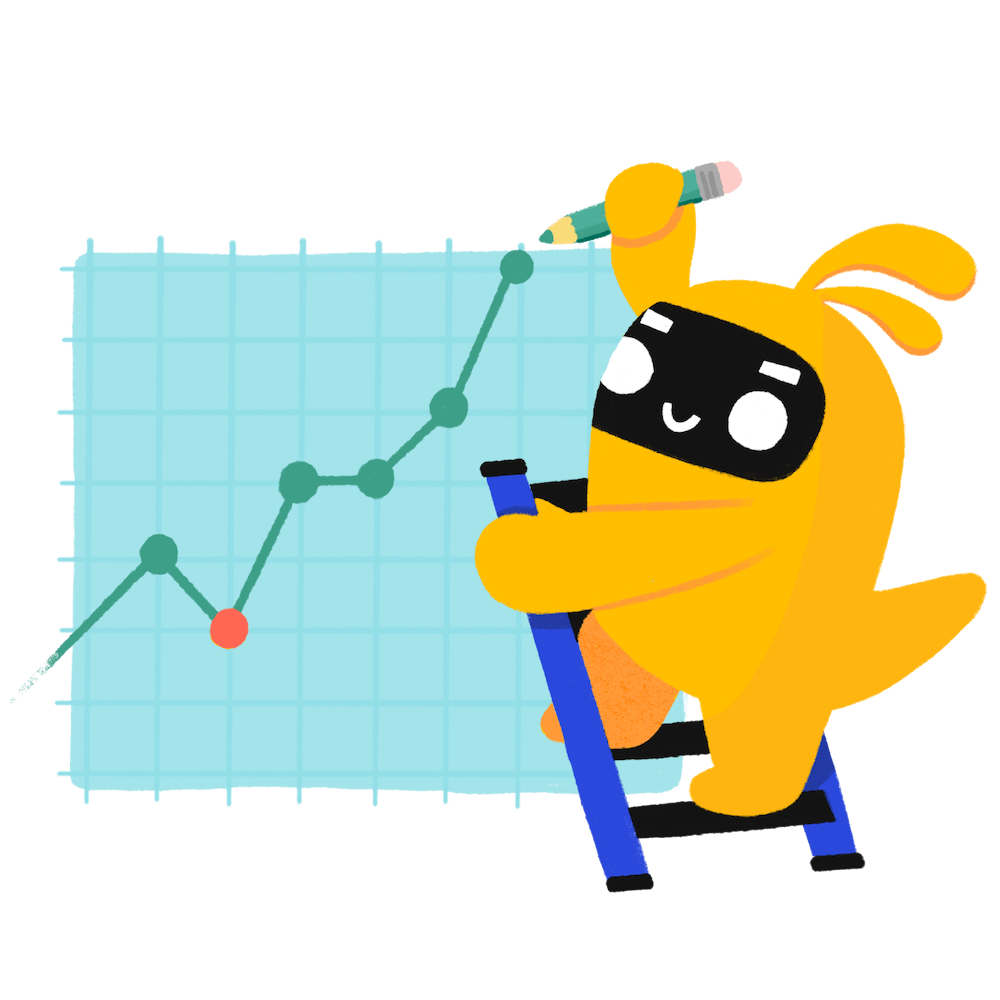2 customisable OKR examples for It Data Analysis Team
What are It Data Analysis Team OKRs?
The OKR acronym stands for Objectives and Key Results. It's a goal-setting framework that was introduced at Intel by Andy Grove in the 70s, and it became popular after John Doerr introduced it to Google in the 90s. OKRs helps teams has a shared language to set ambitious goals and track progress towards them.
Formulating strong OKRs can be a complex endeavor, particularly for first-timers. Prioritizing outcomes over projects is crucial when developing your plans.
We've tailored a list of OKRs examples for It Data Analysis Team to help you. You can look at any of the templates below to get some inspiration for your own goals.
If you want to learn more about the framework, you can read our OKR guide online.
Building your own It Data Analysis Team OKRs with AI
While we have some examples available, it's likely that you'll have specific scenarios that aren't covered here. You can use our free AI generator below or our more complete goal-setting system to generate your own OKRs.
Feel free to explore our tools:
- Use our free OKR generator
- Use Tability, a complete platform to set and track OKRs and initiatives, including a GPT-4 powered goal generator
Our customisable It Data Analysis Team OKRs examples
You'll find below a list of Objectives and Key Results templates for It Data Analysis Team. We also included strategic projects for each template to make it easier to understand the difference between key results and projects.
Hope you'll find this helpful!
1. OKRs to enhance IT Helpdesk Support and Data Analysis for IT Projects
Enhance IT Helpdesk Support and Data Analysis for IT Projects
Increase Helpdesk Support resolution rate by 20%
Establish clear escalation procedures
Integrate efficient problem resolution software
Implement advanced training for helpdesk support staff
Reduce IT project completion time by 15% through improved data analysis
Regularly review and improve data analysis processes
Train IT personnel in optimized data analysis methods
Implement advanced data analysis tools for efficient project handling
Complete data analysis for 2 major IT projects
Gather and organize all necessary data for both IT projects
Analyze collected data and identify key points
Compile and summarize the data analysis results
2. OKRs to improve effectiveness of sales promotion forecasting
Improve effectiveness of sales promotion forecasting
Increase forecasting accuracy by 20% through enhanced data analysis techniques
Conduct regular data quality checks to ensure accuracy
Train staff on enhanced data analysis techniques
Implement advanced statistical models for better forecasting precision
Reduce forecasting errors by 15% to enhance sales promotion planning outcomes
Use AI tools for accurate sales prediction
Continuously train staff on forecasting models
Implement a proactive inventory management system
Implement a new promotion planning software to boost efficiency by 30%
Train staff members to use the new software effectively
Initiate software implementation across all relevant departments
Identify ideal promotion planning software that suits business needs
It Data Analysis Team OKR best practices to boost success
Generally speaking, your objectives should be ambitious yet achievable, and your key results should be measurable and time-bound (using the SMART framework can be helpful). It is also recommended to list strategic initiatives under your key results, as it'll help you avoid the common mistake of listing projects in your KRs.
Here are a couple of best practices extracted from our OKR implementation guide 👇
Tip #1: Limit the number of key results
The #1 role of OKRs is to help you and your team focus on what really matters. Business-as-usual activities will still be happening, but you do not need to track your entire roadmap in the OKRs.
We recommend having 3-4 objectives, and 3-4 key results per objective. A platform like Tability can run audits on your data to help you identify the plans that have too many goals.
 Tability's audit dashboard will highlight opportunities to improve OKRs
Tability's audit dashboard will highlight opportunities to improve OKRsTip #2: Commit to weekly OKR check-ins
Don't fall into the set-and-forget trap. It is important to adopt a weekly check-in process to get the full value of your OKRs and make your strategy agile – otherwise this is nothing more than a reporting exercise.
Being able to see trends for your key results will also keep yourself honest.
 Tability's check-ins will save you hours and increase transparency
Tability's check-ins will save you hours and increase transparencyTip #3: No more than 2 yellow statuses in a row
Yes, this is another tip for goal-tracking instead of goal-setting (but you'll get plenty of OKR examples above). But, once you have your goals defined, it will be your ability to keep the right sense of urgency that will make the difference.
As a rule of thumb, it's best to avoid having more than 2 yellow/at risk statuses in a row.
Make a call on the 3rd update. You should be either back on track, or off track. This sounds harsh but it's the best way to signal risks early enough to fix things.
How to turn your It Data Analysis Team OKRs in a strategy map
Your quarterly OKRs should be tracked weekly in order to get all the benefits of the OKRs framework. Reviewing progress periodically has several advantages:
- It brings the goals back to the top of the mind
- It will highlight poorly set OKRs
- It will surface execution risks
- It improves transparency and accountability
Spreadsheets are enough to get started. Then, once you need to scale you can use a proper OKR platform to make things easier.
 Tability's Strategy Map makes it easy to see all your org's OKRs
Tability's Strategy Map makes it easy to see all your org's OKRsIf you're not yet set on a tool, you can check out the 5 best OKR tracking templates guide to find the best way to monitor progress during the quarter.
More It Data Analysis Team OKR templates
We have more templates to help you draft your team goals and OKRs.
OKRs to increase the utilization of cashback offers
OKRs to boost client engagement in our analytics services
OKRs to develop comprehensive KPIs for service design enhancement
OKRs to elevate knowledge in subject matter for team experts
OKRs to enhance mobile app quality through effective mobile testing
OKRs to implement an AI tool for efficient user manual generation
OKRs resources
Here are a list of resources to help you adopt the Objectives and Key Results framework.
- To learn: What is the meaning of OKRs
- Blog posts: ODT Blog
- Success metrics: KPIs examples
Create more examples in our app
You can use Tability to create OKRs with AI – and keep yourself accountable 👀
Tability is a unique goal-tracking platform built to save hours at work and help teams stay on top of their goals.
 1 Create your workspace
1 Create your workspace 2 Build plans in seconds with AI
2 Build plans in seconds with AI 3Track your progress
3Track your progress